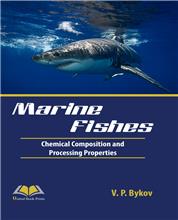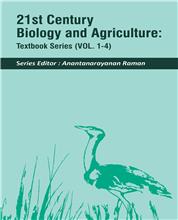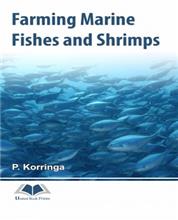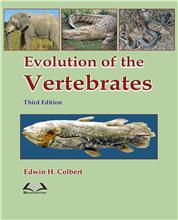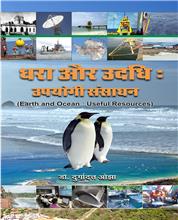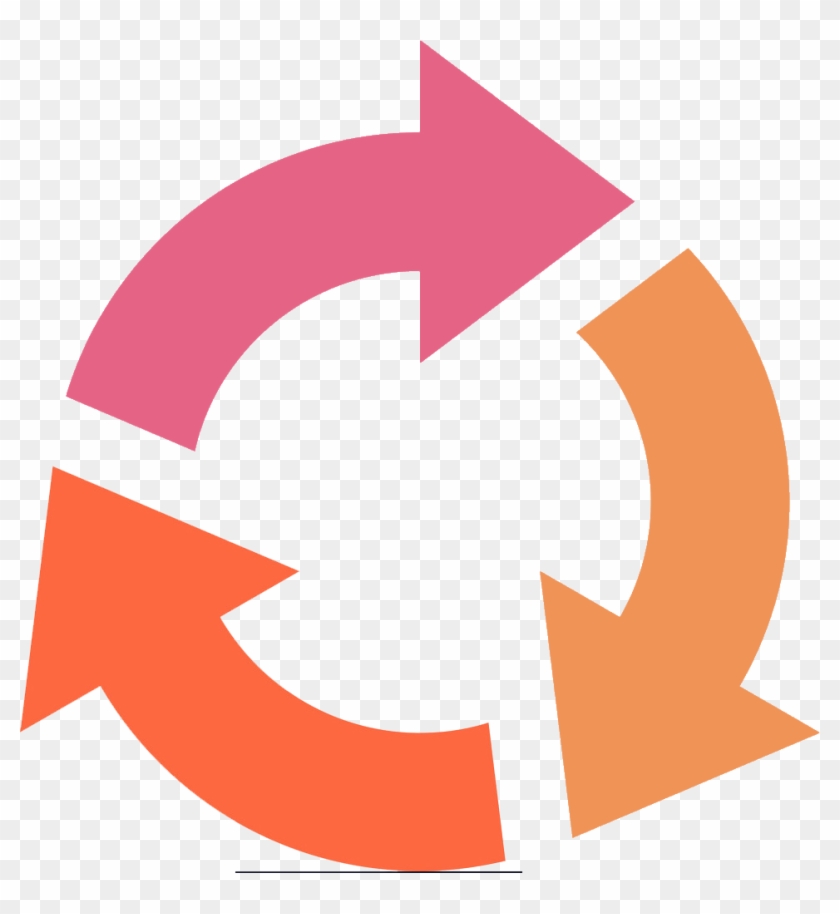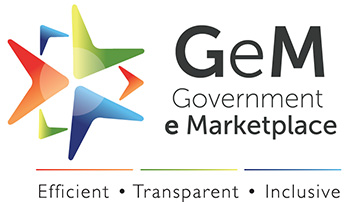1. WASTEWATE REUSE : POLICY, PLANNING AND MANAGEMENT ISSUES
1.1. Preamble, 1.2. Potential for Wastewater Reuse, 1.3. Problems in Wastewater Reuse, 1.4. Role of National Policies in Promoting Wastewater Reuse, 1.5. Planning Issues, 1.6. Management Issues
2. NEED FOR WASTEWATER REUSE IN AGRICULTURE AND FORESTRY
2.1 Introduction, 2.2 Agronomic and Economic Benefits of Wastewater Use, 2.3 Wastewater Treatment and Resource Conservation through Crop Irrigation, 2.4 Quality Parameters for Wastewater Use in Agriculture and Forestry, 2.4.1 Parameters of Concern in Reuse of Wastewater in Agriculture and Forestry, 2.4.1.1 Total Dissolved Solids, 2.4.1.2 Electrical Conductivity, 2.4.1.3 Sodium Adsorption Ratio, 2.4.1.4 Toxic Ions, 2.4.1.5 Trace Elements and Heavy Metals, 2.4.1.6 pH, 2.4.2 Parameters of Human Health Significance, 2.4.2.1 Coliforms and Faecal Coliforms, 2.4.2.2 Faecal Streptococci, 2.4.2.3 Clostridium perfringens, 2.4.2.4 Salmonella spp., 2.4.2.5 Enteroviruses, 2.4.2.6 Rotaviruses, 2.4.2.7 Intestinal Nematodes
3. WATER QUALITY CRITERIA FOR WASTEWATER REUSE AGRICULTURE & FORESTRY
3.1 Introduction, 3.2 Water Quality Guidelines for Irrigation and Evaluation of Potential Hazards, 3.2.1 Salinity, 3.2.2 Sodicity, 3.2.3 Specific Ion Toxicity, 3.3 Characteristics for Protection of Public Health, 3.4 Control of Human Exposure
4. SOIL QUALITY EVALUATION FOR WASTEWATER IRRIGATION
4.1 Introduction, 4.2 Assessment of Soil Quality, 4.2.1 Physical Properties of Soil, 4.2.2 Chemical Properties of Soil, 4.2.3 Microbial Properties of Soil
5. DESIGN OF WASTEWATER IRRIGATION SYSTEM
5.1 Introdution, 5.1.1 Estimation of Crop Water Requirement based on Assimilative Capacity of Soils, 5.1.2 Scheduling of Irrigation, 5.1.3 Design of Irrigation Systems, 5.1.4 Leaching of Accumulated Salts, 5.1.5 Drainage, 5.2 Crop Selection, 5.2.1 Salinity and Sodicity Hazard Control, 5.2.2 Specific Ion Toxicity Hazard Control , 5.2.3 Health Hazards Control, 5.3 Field Management Practices in Wastewater Irrigation , 5.3.1 Water Management , 5.3.1.1 Leaching, 5.3.1.2 Drainage , 5.3.1.3 Timing of Irrigation, 5.3.1.4 Blending of wastewater with other water supplies, 5.3.1.5 Alternating treated wastewater with other water sources, 5.3.2 Land and Soil Management, 5.3.2.1 Land development, 5.3.2.2 Land grading, 5.3.2.3 Deep cultivation, 5.3.3 Crop Management and Cultural Practices, 5.3.3.1 Placement of Seed
6. AQUACULTURE SYSTEM - PAST AND PRESENT SCENARIO
6.1 Introduction, 6.2 Unintentional Reuse, 6.3 Use of Human Waste in Aquaculture, 6.3.1 China, 6.3.2 Hong Kong , 6.3.3 Malaysia and Singapore, 6.3.4 Thailand, 6.3.5 Vietnam, 6.3.6 Indonesia, 6.4. Method of Fertilizing Aquaculture Ponds, 6.4.1 China, 6.4.2 Taiwan, 6.4.3 Hong Kong, 6.4.4 Malaysia and Singapore, 6.4.5 Japan, 6.5 Use of Polluted Surface Water in Aquaculture System, 6.5.1 Indonesia, 6.5.2 Sri Lanka, 6.5.3 Taiwan, 6.6. Sewage, 6.6.1 India, 6.6.2 China, 6.6.3 Indonesia, 6.6.4 Israel, 6.6.5 Europe, 6.6.6 Africa, 6.7 Aquatic Macrophytes, 6.7.1 Vegetative, 6.7.2 Duckweeds, 6.8 Coastal Seawater and Freshwater Aquaculture, 6.8.1 Fertilization of the Seawater with Inorganic Fertilizers, 6.8.2 Coastal Discharge of Sewage, 6.8.3 Commercial Human Waste Reuse, 6.8.4 Experimental Excreta-reuse Mariculture Systems/Woods Hole Oceanographic Institution, Harbor Branch Foundation Studies/ Laboratory Experiments at Woods Hole/Small Scale Outdoor Studies at Woods Hole/ Environmental system Laboratory (ESL) at Woods Hole/ Harbor Branch Foundation Studies/ Other Phytoplankton - Shellfish - Seaweed Reuse Systems/ Humboldt Bay/ North Carolina/ Taxas / Natal, South Africa / Prospects for Human Waste reuse in Mariculture, 6.9 Need for Aquaculture Farming in Developing Countries / Cost of Land Based Food Production will Increase / India's Food Problem versus Population /Importance of Sea Food / Cost of Production of Fish is Cheaper / Trends in World Fish Production Employment and Investment in Fisheries/Contribution of Fisheries to G.N.P. / Consumption of Sea Food/ International Trade of Fishery Products and Exports of Marine Products from India, 6.10. Imperatives in Aquaculture Farming/Specific Problems of Aquaculture/Technical and Economical Problems/New Prospects in Aquaculture /Source and Explanation
7. ECOLOGICAL CONCERNS IN WASTEWATER REUSE IN AQUACULTURE
7.1 Aquatic Ecology : The Freshwater Environment : Types and Limiting Factors/ Temperature/ Transparency /Current/Concentration of Respiratory Gases/Concentration of Biogenic Salts/Ecological Classification of Freshwater Organisms/The Freshwater Biota (Flora and Fauna)/Lentic Communities/ Nature of Communities in the Littoral Zone/Nature of Communities in the Limnetic Zone/ Nature of Communities in the Profundal Zone/Lakes/Stratification in Lakes - The Classic Temperate Zone Pattern / Thermal Stratification in the Tropics/Geographical Distribution of Lakes/ Classification of Lakes/ Ponds / Lotic (Running-Water) Communities/ General Comparison of Lotic and Lentic habitats/ Nature of Lotic Communities/ Longitudinal Zonation in Streams, 7.2 Estuarine Ecology/Definition and types/Biota and Productivity/Food Production Potential, 7.3 Marine Ecology/The Marine Environment/ The Marine Biota/ Zonation in the Sea/ Quantitative Study of Plankton/ Communities of The Marine Environment/ Composition of Communities of the Continental Shelf Region/ A Marine Sediment Profile/ Mangroves and Coral Reefs/ Communities of the Oceanic Region
8. WATER QUALITY CRITERIA FOR WASTE WATER REUSE IN AQUACULTURE
8.1 Aquatic Life/ Community Structure and Protection of Significant Species/Community Structure / Protection of Significant Aquatic Species/Assimilative Capacity of Freshwater Receiving Systems / Mixing Zones/Biological Monitoring/ Bioassay/ Physical manipulation of the Environment /Suspended and Settleable Solids/Colour /Dissolved Gases/ Acidity, Alkalinity, and pH/Dissolved Solids and Hardness / Toxic Substances, 8.2. Marine Life /Uses of the Marine System to be protected / Categories of Pollutants
9. TECHNOLOGY OPTIONS FOR WASTEWATER AQUACULTURE
9.1 Introduction, 9.2 Trench and Overhung Latrines, 9.3 Compositing Latrine, 9.4 Bucket Latrine, 9.5 Pit Latrine, 9.6 Pour Flush-Toilet, 9.7 Vault, 9.8 Aqua Privy and Septic Tank, 9.9 Conventional Sewerage, 9.10 Sewage Stabilization Ponds/Africa/America /Asia /Australia/Europe, 9.11 Sewage Sludge, 9.12 High-Rate Sewage Stabilization Ponds, 9.13 Mass Culture of Zooplankton, 9.14 Septage
10. DESIGN CONSIDERATIONS IN REUSE OF WASTE WATER IN AQUACULTURE FARMING
10.1 Introduction, 10.2 Sewage/Sewage Stabilization Ponds, 10.3 Fish Culture with Sewage, 10.4 Constraints to Fish Culture in Existing System, 10.5 Role of Fish in Sewage Treatment, 10.6 Designs for Reuse System, 10.7 Dynamics for Waste-Fed Ponds/ Fish Species, 10.8 Design Consideration for Coastal Aquaculture Farms, Layout and Design of Aquaculture Farm/Construction, Water Intake System/ Aeration and Aerators
11. DESIGN OF AQUACULTURE SYSTEM
11.1 Introduction, 11.2 Municipal Sewage based Aquaculture/ Design Preliminaries/Design of Facultative Ponds/First Order Kinetics/Dispersed Flow/McGarry and Pescod Empirical Procedure/Other Design Equations /The Gloyna Procedure/Surface Load Procedure/ Design Based on Solar Energy /Design of Maturation Ponds/Bacterial Reduction/Design of Anaerobic Ponds /Aquaculture using Municipal Wastewater, 11.3 Coastal Seawater based Aquaculture/Treatment of Wastewater Discharge from-Coastal Seawater Aquaculture Ponds, Treatment System for Semi-intensive Ponds, Treatment of Solid Waste, 11.4 Design Example, 11.5 Economical and Financial Aspects/ Economics of Municipal Sewage based Aquaculture, Economics of Extensive Shrimp Aquaculture, Economics of Semi-intensive Shrimp Aquaculture
12. ENVIRONMENTAL PROBLEMS ASSOCIATED AQUACULTURE FARMING & CONTROL
12.1 Municipal Sewage Based Aquaculture/Fish Yields and Population Management/Toxic /Organic Loading/ Retention Time / Sludge Accumulation / Physical Characteristics of Pond /Climatic Considerations / Site Selection and Microlevel Survey/Design and Construction of Pond / Effluent Treatment System/ Pond Preparation/Selective Stocking/Pond Management /Feeds and Feeding /Water Quality Management/Control of Unwanted Species/ Water Quality Management by Manipulating Water Colour/ Diseases and Shrimp Health
13. ECONOMIC CONSIDERATIONS IN AQUACULTURE FARMING
13.1 Introduction, 13.2 Economic Assessment of Aquaculture, 13.3 Case Studies/Commercial Aquaculture Systems/Experimental Fish Culture in Sewage Stabilization ponds, 13.4 Economic and Financial Costing of Wastewater Technology
14. HEALTH ASPECT OF WASTEWATER REUSE IN AQUACULTURE
14.1 Introduction, 14.2 Pathogens in Excreta/Viruses / Bacteria / Protozoa / Helminths /Gnathostoma/ Clonorchis and Opisthorchis / Diphyllobothrium latum / Fasciolopsis buski / Fasciola hepatica / Heterophyes, Metagonimus & Gastrodiscoides /Paragonimus /Schistosoma, 14.3 Public Health Hazard Related to Aquaculture, 14.4 Health Aspects of Wastewater Reuse/ Passive Transfer of Excreted Pathogens /Helminths Using Fish as Intermediate Hosts /Helminths with aquatic Intermediate Hosts other than Fish / Ponds as Breeding Sites for Mosquitoes, 14.5 Health Protection Measures in Wastewater reuse/ Enteric Pathogen Indicator Organisms /Human Waste Treatment, 14.6 Coastal Aquaculture, 14.7 Effluent Character Guidelines for Aquaculture, 14.8 Planning and Implementation of Health Safeguards
15. SOCIO-CULTURAL ASPECTS OF WASTEWATER REUSE
15.1 Introduction, 15.2 Public Attitudes, 15.3 Public Acceptance, 15.4 Social Acceptance of Wastewater Reuse
16. ECONOMIC, INSTITUTIONAL, AND LEGAL ISSUES IN WASTEWATER REUSE
16.1 Introduction, 16.2 Institutional Aspects, 16.3 Legal Aspects
CASE STUDY 1 - Wastewater Reuse in Agriculture
CASE STUDY 2 - Wastewater Reuse in Forestry
REFERENCES



